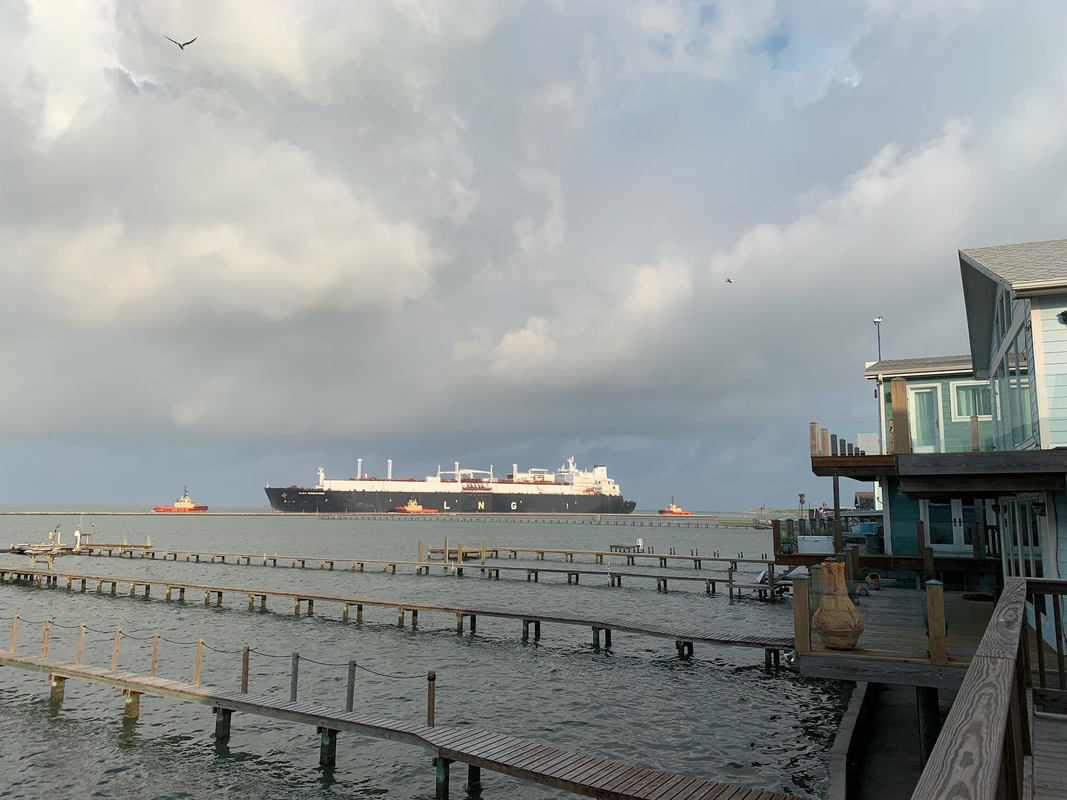It doesn’t seem controversial to say that a proposed project that is designed to export liquefied natural gas (LNG) to foreign countries is an LNG export project – or that it should be subject to the same federal laws as other LNG export facilities. But some self-interested project proponents—including the developers of the Fortress LNG export project in Pennsylvania and New Jersey—argue that those laws don’t apply to them. But they do—and last week, the Sierra Club and Natural Resources Defense Council submitted a petition to the Federal Energy Regulatory Commission urging it to do its job and exercise its jurisdiction over the proposed Fortress project.
As background: a company that wants to build an LNG export facility has to get permission from the Federal Energy Regulatory Commission (FERC)—which, true to its name, regulates energy matters of federal concern. Historically, LNG export facilities usually have been located on the coast: fracked gas is delivered to the facility via a pipeline, liquefied into LNG, and loaded onto ships for foreign export. As a result, despite FERC’s broad mandate to regulate all LNG export facilities, FERC has stated that, to date, it has only exercised jurisdiction over coastal facilities that are connected to a pipeline.
This has given some LNG exporters an idea: what if they break up their operations into two separate locations, locating the liquefaction facility far from the coast, transporting the LNG by train or truck to a coastal facility (instead of by pipeline), and exporting it to foreign countries from there?
Eager to exploit a potential loophole, New Fortress Energy—utilizing a web of subsidiaries and other related Fortress companies—has proposed to do just that. They want to build a massive liquefaction plant in Wyalusing, Pennsylvania that can produce 3.6 million gallons of LNG per day, transport the explosive LNG by rail through communities for over 200 miles, and export it from a port on the Delaware River in Gibbstown, New Jersey. They argue that the inland facility can’t be regulated by FERC because it’s not coastal, and the coastal facility can’t be regulated by FERC because it’s not connected to a pipeline.
New Fortress is not hiding that its goal is to avoid federal scrutiny. In a recent filing with the US Securities and Exchange Commission, the company admitted that it attempts to “design[] and construct[] [its] US facilities so that they do not meet the statutory definition of an ‘LNG terminal’ as interpreted by FERC pursuant to its case law.”[1] (Earlier this year, a federal appeals court rejected New Fortress’s attempt to avoid FERC jurisdiction over an LNG import facility in Puerto Rico.)
Why would they design their projects in this way? Because if they can avoid FERC jurisdiction, they can avoid federal laws that require public participation and a thorough review of their project’s environmental impacts—as well as a determination by FERC of whether the LNG export project is in the public interest despite those impacts. And there’s no question that the impacts are severe—from increased drilling to supply gas for export, air pollution from the liquefaction plant in Wyalusing, trains and trucks filled with explosive LNG traveling through communities, increased ship traffic near the port in Gibbstown, and greenhouse gas emissions when the exported gas is ultimately combusted at its final destination.
But environmental and local community groups have been fighting back for years. And the fight against this dangerous project—and attempts to evade proper oversight—continues. Last week, the Sierra Club and Natural Resources Defense Council filed a petition for declaratory order requesting that FERC issue an order stating that it has jurisdiction over the entire Fortress LNG export project—and that the project as a whole must undergo a single environmental review under the National Environmental Policy Act.
In short, FERC should find that a project designed to export LNG is indeed an LNG export project. Allowing New Fortress to artificially divide the project into separate components would create an LNG-tanker-sized gap in FERC’s jurisdiction—contrary to both the public interest and Congress’s mandate requiring federal oversight over LNG exports.
[1] New Fortress Energy, SEC Form 10-K, at 10 (2022), https://ir.newfortressenergy.com/static-files/293f7481-c2b7-468d-b76f-049f904bb67e.
